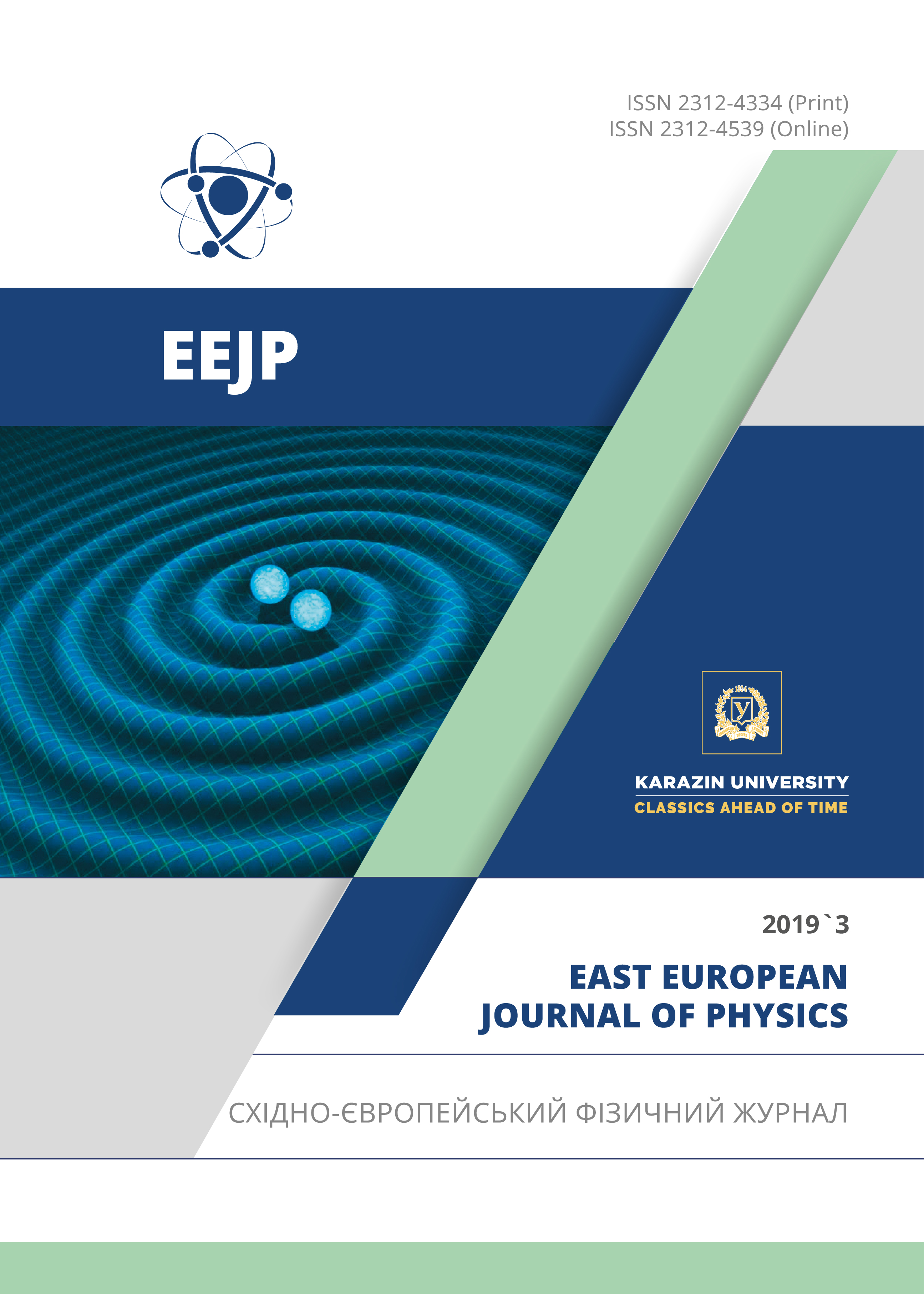Особливості нерухомих точок в N-точкових гравітаційних лінзах
Анотація
В роботі проведене дослідження множини нерухомих точок в N-точкових гравітаційних лінзах. Для цього була використана комплексна форма лінзового відображення. Комплексна форма має перевагу над координатною: в координатний форми N-точкова гравітаційна лінза задається системою з двох рівнянь, а в комплексному вигляді досить одного рівняння. Це рівняння легко перетвориться в поліноміальне рівняння, яке зручне для дослідження. В роботі лінзове відображення представлено у вигляді лінійної комбінації двох відображень: комплексно-аналітичного і тотожного. Аналітичне відображення задає аналітична функція (функція відхилення). Нерухомими точками є корені функції відхилення. Показано, що всі нерухомі точки лінзового відображення належать мінімальному опуклому багатокутнику. Вершинами мінімального опуклого багатокутника є точки, в яких знаходяться безрозмірні точкові маси. В роботі розглянутий метод побудови нерухомих точок в N-точкових гравітаційних лінзах. Було показано, що нерухомих точок в одноточковій лінзі не існує. Досліджені властивості нерухомих точок і їх зв’язок з центром мас системи лінз. Отримані залежності розподілу нерухомих точок від центра мас. Проаналізовані різні можливі випадки розподілу в N-точкових гравітаційних лінзах. Показано, що у деяких випадках нерухомі точки збігаються з центром мас системи. Було отримано лінійну залежність між нерухомою точкою в двоточковій гравітаційній лінзі та центром мас та побудували модель. Отримали залежність нерухомих точок від центру мас в 3-точковій гравітаційній лінзі в випадку коли лінза утворює трикутник та пряму. Показали, що в випадку трикутника існують приклади, коли збігаються нерухомі точки. Досліджені умови, коли неможливо однозначно отримати залежність розподілу нерухомих точок від центру мас у випадку 3-точкової гравітаційної лінзи та у більш складних випадках.
Завантаження
Посилання
E.Y. Bannikova and A.T. Kotvytskiy, MNRAS 445(4):4435–4442, (2014), https://doi.org/10.1093/mnras/stu2068.
A.T. Kotvytskiy, TMP 184(1):160–174, (2015), https://doi.org/10.1007/s11232-015-0315-x.
A.T. Kotvytskiy, S.D. Bronza and S.R. Vovk, Journal of Kharkov National University V.N. Karazin. Series: Physics, 24, 55-59 (2016)
A.T. Kotvytskiy, S.D. Bronza, K.Yu. Nerushenko and V.Yu. Shablenko, in: Збірник наукових праць VI-ї Міжрегіональної науково-практичної конференції «Астрономія і сьогодення»: Collection of scientific researches of VI interregional scientific-practical conference “Astronomy and Present” (Vinnytsia, 2017). pp.198-213 (in Ukrainian)
A.T. Kotvytskiy and S.D. Bronza, Odessa Astronomical Publications, 29, 31-33, (2016).
S.D. Bronza and A.T. Kotvytskiy, Journal of Kharkiv National University V.N. Karazin, Series: Physics, 26, 6-32 (2017).
S.D. Bronza, Ju.V. Svyrydova and L.A. Kotvytska, Odessa Astronomical Publications, 31, 6-10, (2018), https://doi.org/10.18524/1810-4215.2018.31.144434.
A.T. Kotvytskiy, V.Yu. Shablenko and E.S. Bronza, Odessa Astronomical Publications, 31, 24-28, (2018), https://doi.org/10.18524/1810-4215.2018.31.144558.
A.O. Petters and F.J. Wicklin, Journal of Mathematical Physics 39, 1011 (1998), https://doi.org/10.1063/1.532367.
P. Schneider, J. Ehlers, E.E. Falco, Gravitational Lenses. (Springer-Verlag, Berlin Heidelberg, 1997), pp. 266.
H.J. Witt, A&A, 236(2), 311-322, (1990).
Автори, які публікуються у цьому журналі, погоджуються з наступними умовами:
- Автори залишають за собою право на авторство своєї роботи та передають журналу право першої публікації цієї роботи на умовах ліцензії Creative Commons Attribution License, котра дозволяє іншим особам вільно розповсюджувати опубліковану роботу з обов'язковим посиланням на авторів оригінальної роботи та першу публікацію роботи у цьому журналі.
- Автори мають право укладати самостійні додаткові угоди щодо неексклюзивного розповсюдження роботи у тому вигляді, в якому вона була опублікована цим журналом (наприклад, розміщувати роботу в електронному сховищі установи або публікувати у складі монографії), за умови збереження посилання на першу публікацію роботи у цьому журналі.
- Політика журналу дозволяє і заохочує розміщення авторами в мережі Інтернет (наприклад, у сховищах установ або на особистих веб-сайтах) рукопису роботи, як до подання цього рукопису до редакції, так і під час його редакційного опрацювання, оскільки це сприяє виникненню продуктивної наукової дискусії та позитивно позначається на оперативності та динаміці цитування опублікованої роботи (див. The Effect of Open Access).








